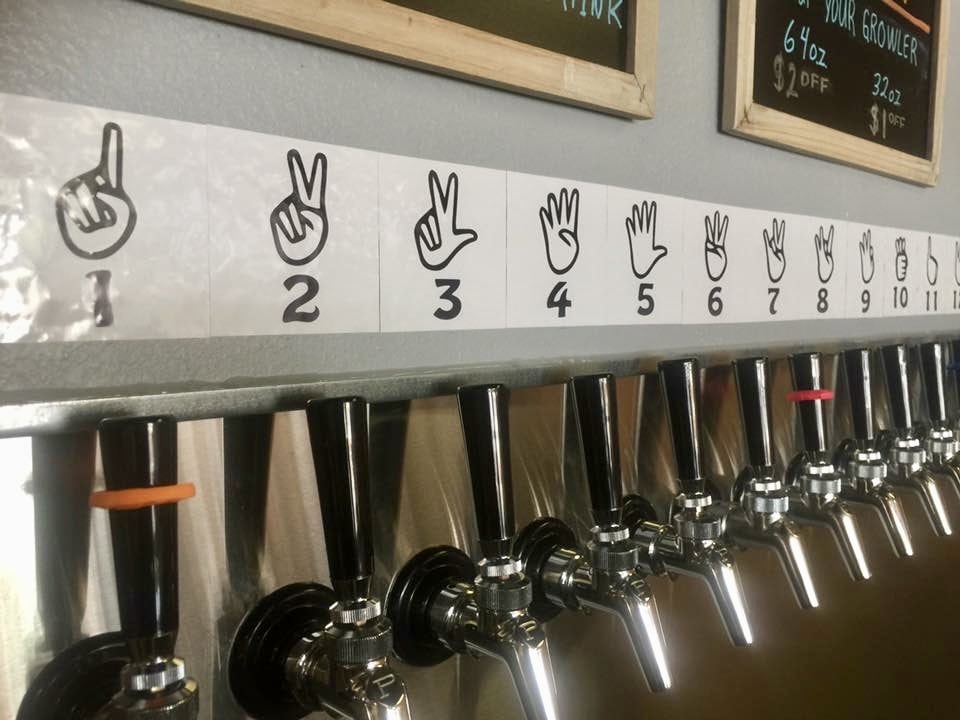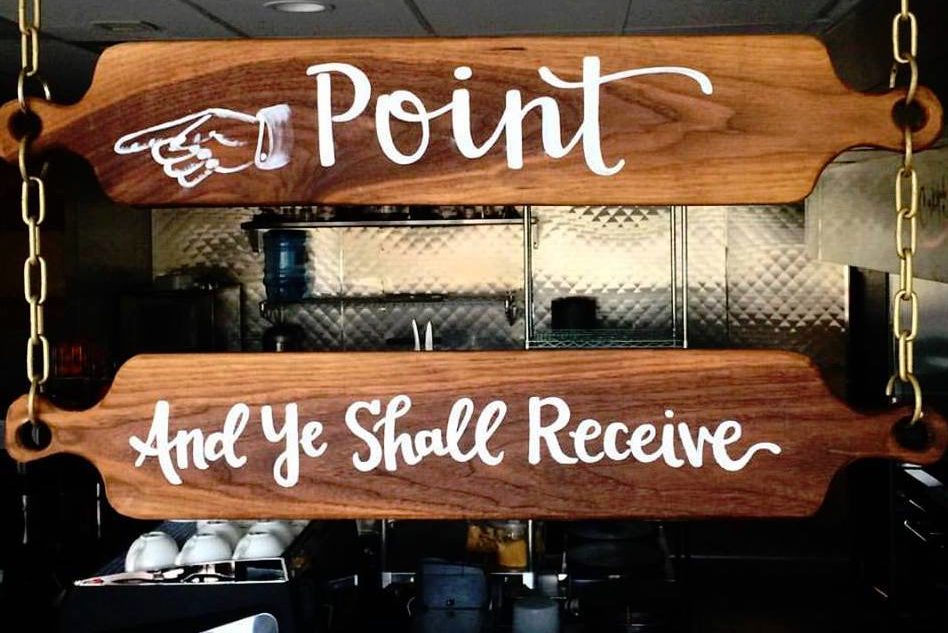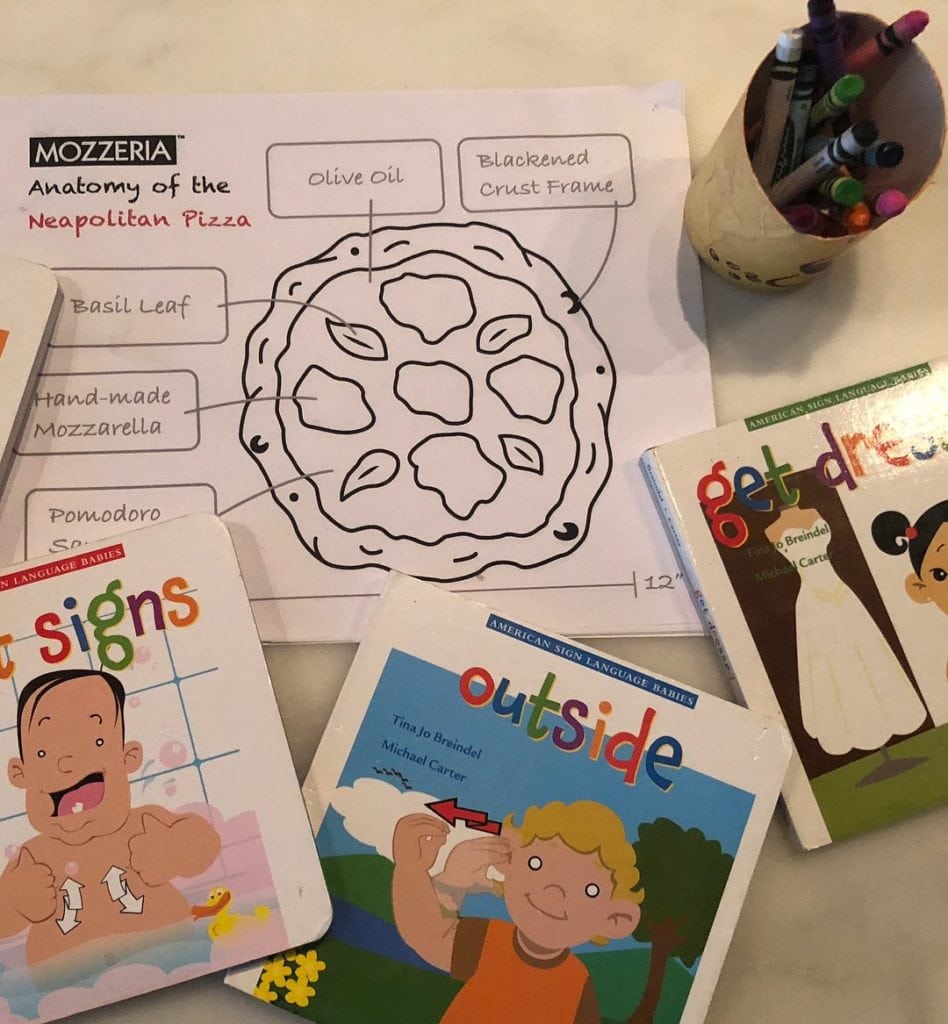The Deaf Restaurant Revolution Is Upon Us

Photo Caption: igns above taps at Clackamas River Growlers explain how to order using sign language.
Skift Take
Deaf-owned restaurants are on the rise, transforming careers for an underemployed population.
In 2007, when Vladimir and Inna Giterman opened Crepe Crazy, their food truck in Austin, Texas, they were considered renegades. It wasn’t that their food truck concept was all that unusual — overstuffed crepes based on the delicate blini recipe of Vladimir’s childhood in Russia. But they were. Vladimir and Inna, who now have two brick and mortar stores which they run with their children Sergei and Michelle, are deaf. And in 2007, deaf-owned restaurants were a relative novelty. Not so today.
Over the past decade, buoyed by innovative technology, many deaf entrepreneurs have turned to the hospitality industry, opening full-service restaurants, coffee bars, dessert shops and breweries. In addition to Crepe Crazy, Austin’s vibrant deaf restaurant scene, owed to its proximity to Texas School for the Deaf and the University of Texas at Austin, includes Casey’s New Orleans Snowballs, owned by hearing partner Mars Chapman and deaf partner and general manager Kyle Littlepage, and a new spot called Pepperbox Coffee owned by Nicholas Buchanan. Maryland is awaiting the opening of Streetcar 83 Brewery, a restaurant and brewery owned by Jon Cetrano, Mark Burke, and Sam Costne; California boasts chef Jonathan Weiss’ Big Mango Cafe, and Darren’s Restaurant and Bar, run by chef Darren Weiss (no relation); and Portland, Oregon is home to brewer Mark Long’s Clackamas River Growlers, a craft brewery that will add food service in the fall.
The movement has also made it to beleaguered Starbucks, which will open its first signing store in Washington, D.C., on Sixth and H streets near Gallaudet University, in October. “This is an historic moment in our ongoing journey as a company to connect with the deaf community, hire and engage deaf partners, and continue to find ways to more inclusive accessible and welcoming to all of our stores,” said Rossann Williams, Starbucks’ executive vice president of U.S. retail in a press release.
The store is modeled after Starbucks’ first signing store, which opened in Malaysia in 2016. It will be staffed with both deaf and hearing baristas who speak American Sign Language (ASL). Deaf baristas will wear aprons made by a deaf supplier embroidered with signs for the letters in “Starbucks”; hearing baristas who sign will wear buttons that say “I Sign.” Starbucks has faced lawsuits in the past over discrimination of deaf patrons and employees.
Starbucks’ announcement comes on the heels of news that Mozzeria, the Neapolitan-style pizzeria in San Francisco opened in 2011 by deaf restaurateurs Melody and Russ Stein, will begin to franchise. Earlier this year, it received an investment from the Communication Services for the Deaf (CSD) Social Venture Fund, the first-ever social venture fund and incubator for deaf-owned businesses in the United States. Thanks to the SVF, Mozzeria is now poised to grow deaf-owned franchises across the country through the creation of ASL-centered training programs, resources and mentoring for the new business partners, with its second location slated to open in Austin.
CSD’s Social Venture Fund was founded with a clear goal in mind—to create opportunity and access for a community that has been plagued by employment discrimination and soaring rates of unemployment and underemployment (someone who is involuntarily working part-time or is overqualified for their current position).

Lighthearted but useful instruction at Austin's Crepe Crazy
Clearing Barriers
The roots of deaf discrimination run deep. Deaf people were actually banned from employment in a 1906; a policy that was reversed two years later by President Teddy Roosevelt. Deaf children were denied access to public schools until 1972 when the U.S. District Court in the District of Columbia in Mills v. Board of Education decided that every child, regardless of the type and severity of their disability, was entitled to a free public education. Then, in 1990, the Americans with Disabilities Act finally prohibited discrimination based on disability. Even so, discrimination against the deaf remains pervasive.
According to the CSD, deaf people are underemployed at a rate of 70 percent and one in four deaf people have quit a job due to discrimination. The National Deaf Center’s 2016 report, Deaf People and Employment, found that almost half of deaf people (47 percent) were not in the labor force, compared to less than a quarter (23 percent) of hearing people. While this group includes students, new mothers, and early retirees, it also includes individuals who have discontinued seeking employment due to lack of opportunity and pervasive communication access barriers.
That lack of opportunity is what Hannah Wheatcroft, a deaf college student at Naropa University in Colorado, has faced again and again. Her most recent attempt to get a job at a local coffee shop was a bust, even though she has extensive barista experience and good references. “It’s very hard to find a place who willing to hire a deaf person,” she said via email. “Every time I apply for a job, they don’t end up hiring me. They say they don’t feel it’s a good fit. It is very frustrating.”
Despite facing repeated discrimination, Hannah is far from deterred. Inspired by her sister Kate Wheatcroft, who owns the popular Brooklyn bakery Bien Cuit, she plans on opening a coffee shop of her own in Denver after she graduates in 2020. “I thought, I don’t have to wait for someone to give me a job. I should set up my own business.”
Mark Long, who recently opened Clackamas River Growlers, a craft brewery in Portland, Oregon, also struggled to find work early on. “I could spend a whole year before I could find a job,” he said via video relay call. After graduating from RIT, he found work as a computer programmer, but things were still difficult. “I was the only deaf person and I struggled in meetings. It was also clear that my co-workers were advancing and I was not. I felt the only way I could move up was if I worked for myself.”
A determined entrepreneurial spirit in the face of discrimination is only part of the reason deaf individuals are finding their way to the hospitality industry with more regularity; technology is the other. Everything from email, to Slack and text messaging has made communication between the deaf and hearing worlds simple and fast. “The key for many deaf people is that technology has improved how well we can communicate,” said Long. “It has helped tremendously. When I want to order more beer, I just text my distributor and that’s it.”
Tech Support
One of the most significant innovations in technology has been the video relay call (relay service providers include Sorenson, Convo, and CSD), which received Federal Communications Commission approval just over a decade ago. Restaurants use it to take phone call orders and reservations, and talk to vendors and contractors (and reporters, like me). These services immediately patch in an interpreter who can speak ASL and English and who facilitates the communication between the deaf person and the hearing person seamlessly, in real time. In addition to VRS, guests are using the internet and mobile apps like Resy and OpenTable to reserve tables, and Seamless and Grubhub for delivery.
Also significant is that any accommodation a business makes for a deaf employee, like hiring a sign language interpreter for staff meetings, gives the business a federal dollar for dollar tax credit; not a deduction. “It’s not a write off, its a credit. You get it back, you are not losing out,” said Casey’s New Orleans Snowballs co-owner Mars Chapman.
To communicate with hearing guests, deaf staff use a variety of tools, some based on technology, others not. Crepe Crazy has a large menu where people can point to their order under a sign that reads "Point and ye' shall receive." They also use writable LED boogie boards, which can be written on and quickly erased with the click of a button.
Nicholas Buchanan, who opened Pepperbox Coffee in Austin in February of 2017, uses a laminated menu with a dry erase marker. Coffee shops like ink! have writable countertops. Other operators, like Mozzeria and Casey’s Snowballs, use a primitive combination known as the paper and pen. At Clackamas River Growlers, Long has numbered each beer on his menu; Long also has cards set up that teach finger signs for all numbers. “Guests can have some fun and learn a little sign language,” said Long, who says many first time visitors come excited about the fact that the business is deaf-owned. “There’s a lot of word of mouth.”
For the restaurant industry, plagued by a staffing crisis, the deaf community also provides an advantage. According to the NDC report, deaf individuals are likely to demonstrate strong commitment to their jobs, and may be more likely to stay in their jobs if employers and co-workers are accommodating to their needs. Chapman, a hearing partner at Casey’s New Orleans Snowballs, agrees. “The deaf population is very unemployed and underemployed. Whenever you can offer a job to a deaf person, they feel valued and like they are contributing and that employee is worth more than someone who is just around for a paycheck. There is less turnover as long as you treat people fairly.”
While some restaurateurs hesitate to hire deaf employees, those who have highly recommend it. Samara Melanson, who owns Uncle Betty’s Diner, has worked with Kenneth Graham since he came in and applied as a dishwasher. Graham, who is deaf, is now their chef. “It’s a highly verbal industry, but we are clear proof that it can work. We want other employers to take a chance on a deaf person. He comes in early, he stays late, he comes in on his days off. He is the dream employee, and he has shown me humility, and he has shown me integrity, and I am so proud to have him on board,” she said in an interview with Global News.
Quite frankly, Chapman says, it’s all the same. “Hiring someone who is deaf is no different than hiring a hearing person,” he said. “You take a chance, train someone, and you never know what a person is like. Those risks remain the same.”
There is also the goodwill associated with hiring from the deaf community. “It can have a positive publicity factor,” he said. “Customers have a lot of joy here. And we have a lot of deaf customers that we likely would not have if we didn’t have a deaf presence. It’s been a substantial boon to our business.”
While deaf restaurateurs are growing in numbers, they are not immune to the obstacles and hardships facing anyone opening a restaurant—skyrocketing costs, coupled with legal and regulatory burdens; the communication barrier is just the icing on the cake. What about when the health inspector shows up without a sign language interpreter, or when vendors or government employees harbor bias and stereotypes? It can be exhausting and time consuming to handle, when piled on top of the ordinary litany of hurdles.
Nevertheless, it’s doable, says Pepperbox’s Nick Buchanan. “The restaurant industry is one of the toughest attempts,” he said via email. “And as a deaf person, it takes a lot of willpower to persevere to the end. You just have to put your mind to it. There’s nothing stopping anyone deaf from achieving it.”

The kids' pack from Mozzeria in San Francisco: a coloring sheet and early signing books
Treat Your Deaf Customers Right—Hospitality is Universal
-
- Light: Without light, people who rely on sign language can’t communicate. Seat deaf and hard of hearing diners in well-lit areas, or better yet, give deaf patrons the option of choosing there to sit. Be sure to have extra candles or small LED lights on hand if you don’t want to raise the light level of the entire restaurant.
-
- Ordering: Not all deaf diners are the same. Some deaf people can use their voice and others can’t; and just because one person can use her voice doesn’t mean others at that table can or want to. Don’t ask the person who uses her voice to do the ordering for the entire table. It may be easier for restaurant staff, but it is offensive to deaf diners.
-
- Specials: Many deaf people miss out on specials or promotions because servers can’t be bothered to go through it all. Servers, be patient or have specials written out in advance to share with deaf guests.
-
- Use Gestures: It goes a long way if you can use gestures to communicate with a deaf person.
-
- Write it down: Servers should regularly have pen and paper for any questions and communication that is lost in translation. Writing takes a bit longer than speaking, but hospitality should include the time it takes to make sure all guests are having the same welcoming dining experience.
-
- Tablet: Have a tablet with the menu and menu descriptions available to share with deaf guests. Ask your accountant if these may be written off under the tax code.
-
- It’s always great if servers learn even a little bit of ASL; it makes a huge difference to the deaf guest.
Over the course of her career, Andrea Strong has been a lawyer, a restaurant manager, a waitress, a farm hand, a humanitarian activist, and for the last two decades, a journalist. Known for her pioneering food blog, The Strong Buzz, Andrea now covers the intersection of food, business, policy, and the law.

The travel industry's top event returns this fall.
September 16-18, 2025 - NEW YORK CITY
